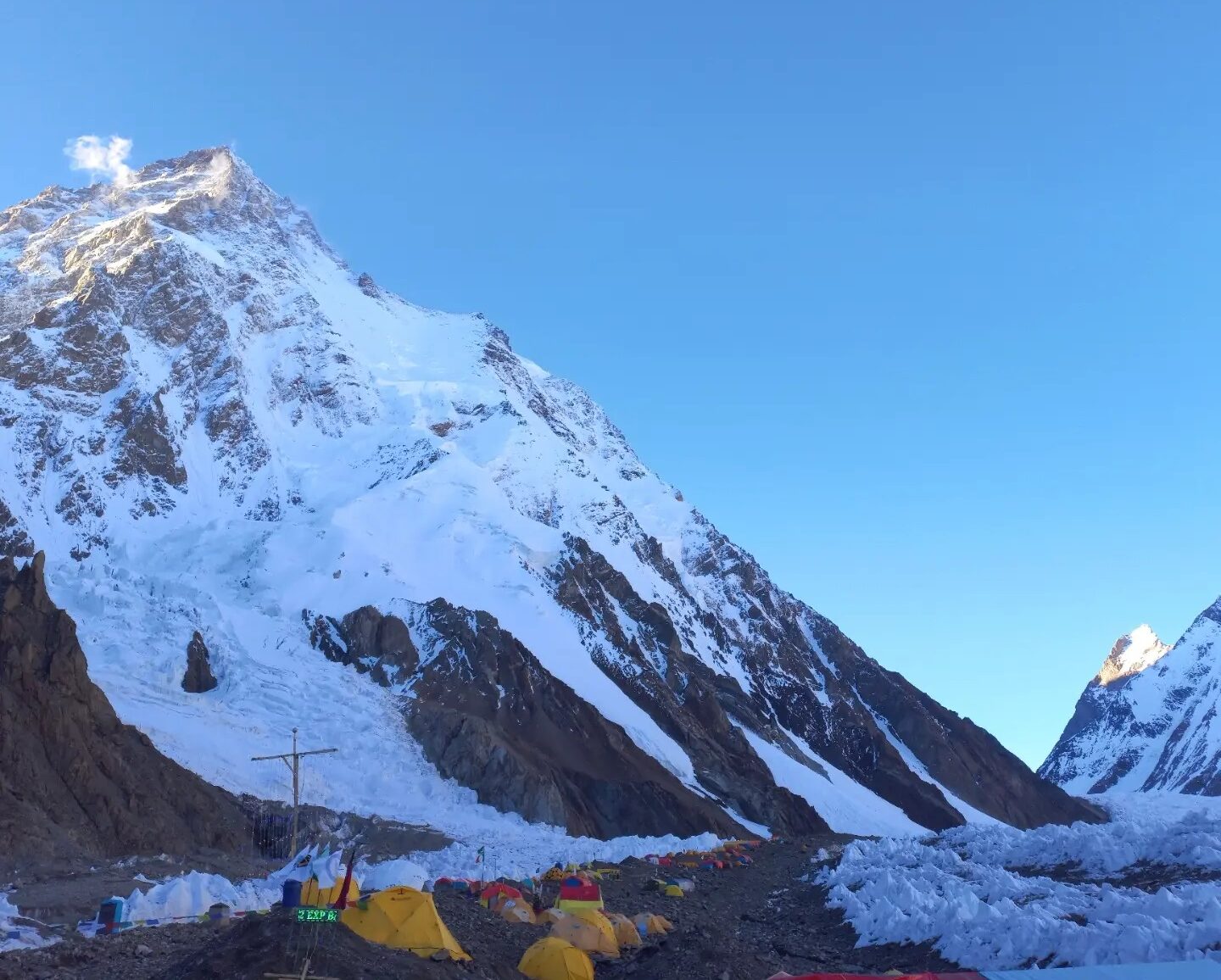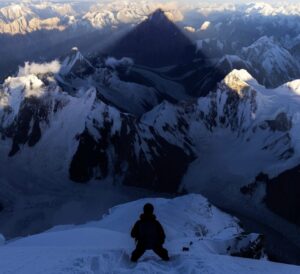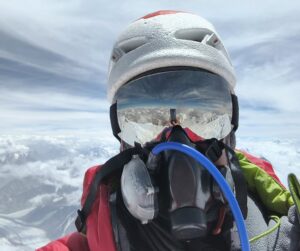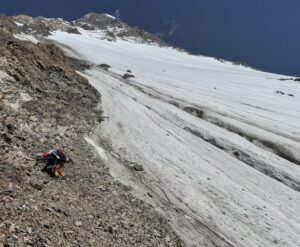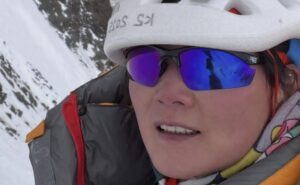The short answer is that it’s not clear if climbers will have a chance to try for the summit of K2 before the season closes. The weather remains unstable and unpredictable, and teams have not even set up Camp 3.
However, the trend in the last few years is to wait till the last moment, if necessary, and then attempt a single, massive summit push. In recent years, such a strategy has resulted in high summit rates, but it involves serious risks.
Numbers and weather vs business
On 8,000m peaks, an outfitter’s goal is simple: put the maximum number of climbers on the summit at the minimum possible cost and within their safety standards. These standards may vary, depending on the company. The number of K2 permits has increased significantly in the last 10 years. In 2024, it’s around 200. Two Japanese alpinists are trying a unique route on the West Face, and some paragliders are likewise climbing on their own, but the rest are clients, sherpas, and guides.
Before staking their season on one massive summit wave, agencies must set up and supply Camp 4, or at least Camp 3, with plenty of oxygen. Then all they need is a short weather window to allow a strong team to lay ropes and break trail to the summit, with the clients right behind.
Summit pushes have now begun on Broad Peak and Gasherbrum II, but K2 has to wait until the complicated logistics are ready for this much higher peak.
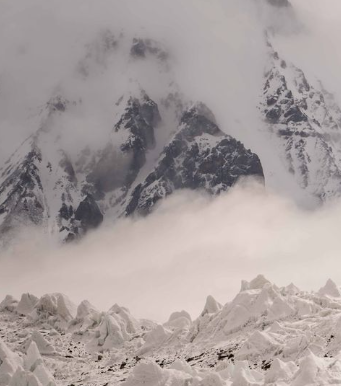
K2 today, wrapped in clouds. Photo: Vedrines/Seb Montaz
Consequences for no-O2 climbers
As on Everest, the first casualties of this last-minute strategy are those attempting the peak without bottled oxygen. While they benefit from fixed ropes and a packed trail, they must avoid traffic jams, especially on the upper sections. Those on oxygen can afford to wait, but it’s vital for those breathing entirely on their own to get up and down quickly before they become too cold or run into altitude problems. Oxygen not only staves off altitude sickness; it also makes climbers less vulnerable to cold.
One of those no-O2 climbers, Benjamin Vedrines of France, is now considering a change of tactics. His original plan was to speed up K2 in a day and paraglide down. He may now try to climb in two days rather than one. Vedrines also assumes that he will have to go ahead of the others, breaking his own trail and using only old ropes, if any at all.
This means he might be alone on the upper part of the route. Meanwhile, he badly needs one more acclimatization round and is running out of time. So he and photographer Seb Montaz are moving to neighboring Broad Peak for the weekend, where they will try to climb to 7,500m.
Unreliable forecasts
Several climbers currently in the Karakoram report that forecasts seem to be unreliable this year.
Vedrines and three other French climbers/paragliders in Base Camp had hoped to go up and leave gear at Camp 3 this week. However, conditions kept everyone from advancing any further than Camp 2.
“Past that, it was too stormy,” Vedrines said.
At least one of the paragliders, Jean-Ives Fredriksen, managed to fly from Concordia and capture some amazing video:
Meanwhile, being alone on K2 is part of the plan for alpinists Kazuya Hiraide and Kenro Nakajima of Japan. They still hope to attempt the West Face in a single, alpine-style push. Yesterday, they reported that their only chance may come at the end of July, if at all.
The risks of one massive push
The single-push strategy on K2 was borrowed from Everest, where it has been a success, assuming that crowds and several deaths a year are a fair price. However, K2 differs from Everest in two ways. First, the weather is usually worse than, so teams can’t afford to let the crowds have their summits first as they wait for another, quieter window of opportunity. Second, the objective risks are much higher on the upper part of K2. This is also where the biggest traffic jams occur.
Everest’s most dangerous section is the Khumbu Icefall at the very start of the climb. Teams can spread out when they move to the comfortable Camp 2, minimizing their exposure in the unstable Icefall. Once in Camp 2, they sit and wait for the right summit day.
K2 has objective risks all along the Abruzzi Spur route, but the biggest hazard is the traverse under the Great Serac and the Bottleneck. Climbers must do this 8,000m+ passage twice on their summit day, both to and from the summit.

Headlamps mark the way up the Bottleneck in the early hours of July 27 last year. Photo: Wilhelm Steindl
Russian roulette
There is no way to predict when a piece of the Great Serac might break off and fall on the climbers. In the last few years, increasing temperatures have made all mountains, including K2, more unstable.
Traditionally, K2 climbers assumed speed was their best option when traversing under the serac. Everyone hurried past that section quickly. But speed is impossible when there is a long line on the ropes as inexperienced clients cautiously negotiate steep, icy terrain with a void yawning beneath them. More than ever, the traverse is a Russian roulette, with the odds of survival affected by conditions, numbers, weather, and luck.

Climbers clipped to fixed ropes on K2. Photo: Sajid Sadpara
Disaster has struck in the past. On Aug. 1-2, 2008, there were crowds, delays, slow progress. Then a piece of the Great Serac broke off. The subsequent avalanche cut the ropes and stranded several climbers on the upper sections as night fell. They had to try to downclimb in the dark.
The following day, other avalanches struck. Some climbers lay injured, while others tried to help. The result was the worst tragedy in the history of K2: 11 dead and three seriously injured.
What to expect
In the next few days, several climbers may join the ongoing summit push on Broad Peak, either to add its summit to their resumés or to acclimatize for K2. If the weather permits, we will get summits.
The main uncertainty on K2 is whether climbers will try to reach Camp 3 (at 7,350m) before it is supplied and push forward from there. Or will they wait for staff to carry up food, fuel, and oxygen bottles, then fix the ropes above before beginning their final push? Multimodel forecasts show high winds on the mountain until next Friday, July 26.
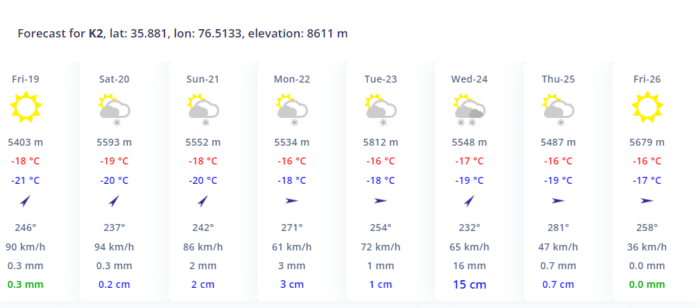
Multimodel forecast for K2 at summit altitude, from July 19 to 26, by Meteoexploration.com
